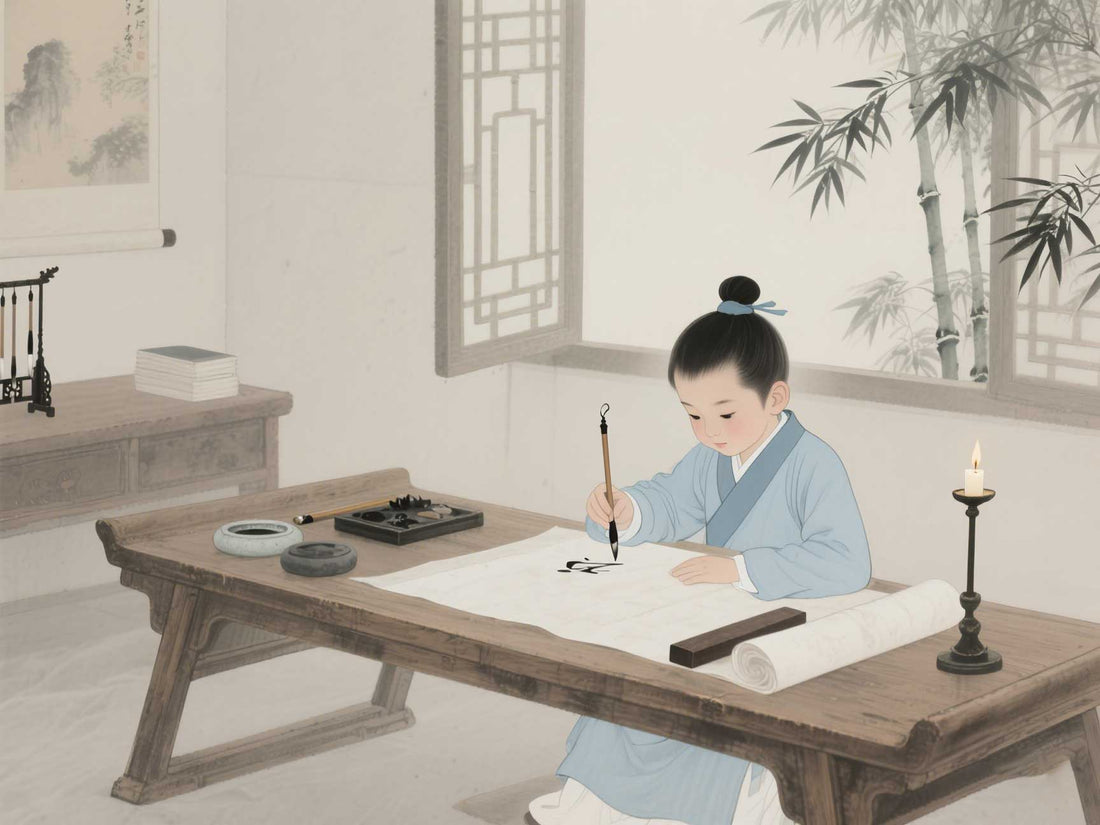
Cai Yong created the "Flying White Script"
Share
The Origin of Feibai Calligraphy: Inspiration from Craftsmen and Technique Innovation
-
Inspiration by Chance <br>When Cai Yong went to Hongdu Gate to submit "The Holy Emperor" during the reign of Emperor Ling of the Eastern Han Dynasty (around 175 AD), he saw craftsmen brushing the wall with lime water using a broom. The "black background and white marks" left on the wall triggered his reflection on the brushwork because of its mottled and white, virtual and real characteristics.
-
Repeated Practice <br>After returning home, Cai Yong imitated the bamboo broom brush. By adjusting the amount of ink and the speed of writing, he created the special effect of "slightly revealing white in the strokes", forming the Feibai style of calligraphy that combines the beauty of dryness and moistness. This process was later called "the creation of Feibai", which embodies the logical chain from the artist's observation of nature to the refinement of techniques.
The core features of Feibai calligraphy
- Technical characteristics : White space is deliberately left in the strokes to simulate the effect of a dry brush, forming a visual contrast of "dryness and wetness in harmony", as lively as a bird's head and a phoenix's tail.
- Philosophical connotation : It integrates the Taoist idea of "the coexistence of the virtual and the real" and emphasizes the artistic conception of calligraphy that "there is charm even in the place without ink".
- Tool innovation : Cai Yong improved the bamboo flat brush, breaking through the limitations of traditional brushes and providing an example for innovation in calligraphy tools.
Historical influence and artistic value
-
Status in calligraphy history <br>Feibai script is praised as "the reform of cursive seal script". The inscription of "Xiping Stone Classics" written by Cai Yong in this style was once popular in the court of Han Dynasty and became the preferred font for inscriptions on plaques. Zhang Huaiguan of the Tang Dynasty commented that his calligraphy was "clear and vigorous, refreshing and powerful", which shows his inspiration to the calligraphy style of later generations.
-
Inheritance and decline in later generations <br>Feibai calligraphy was still highly regarded during the Tang and Song dynasties (such as Ouyang Xun and Chu Suiliang who had studied it), but due to its high technical threshold and limited practicality, it gradually declined after the Yuan Dynasty, and was only occasionally seen in seal engravings and literati's collections.
Controversy and re-cognition
Some scholars believe that "Feibai" is essentially a technique rather than an independent style of calligraphy, and that later generations' interpretation of its "calligraphy style" is the result of artistic processing. But it is undeniable that Cai Yong innovated calligraphy tools and brushwork by observing natural phenomena, creating a unique form of expression in the history of Chinese calligraphy.
- Inspiration scene : The tool used by the craftsman is a "broom", and the material used to paint the wall is lime water. The traces of "white lime mixed with wall skin" become the prototype of Feibai calligraphy aesthetics;
- Principle of brushwork : Through rapid brush movement and controlled ink volume, the background color of paper and silk is naturally revealed, achieving the "flying white" effect.
The creation of Feibai calligraphy is not only a breakthrough in technique, but also a classic example of an artist extracting aesthetic laws from the details of life.
